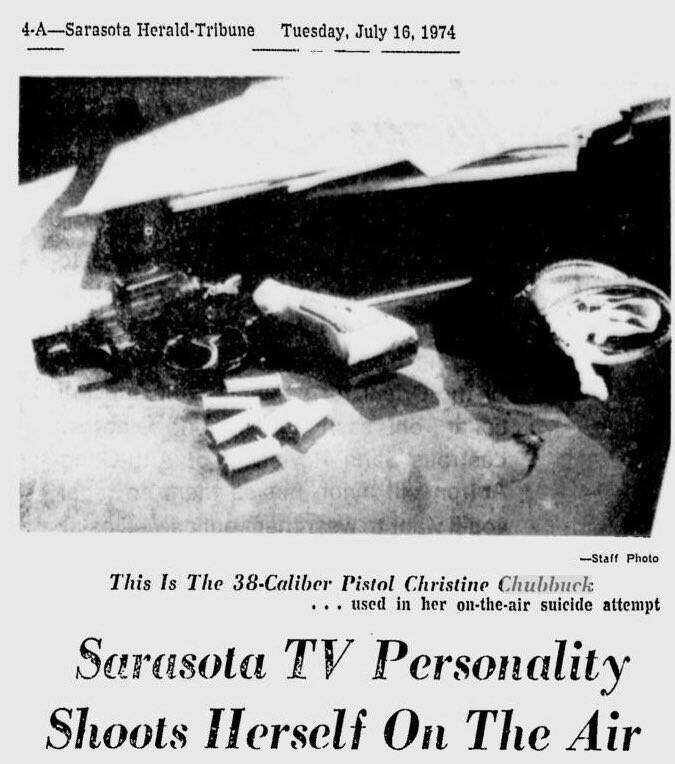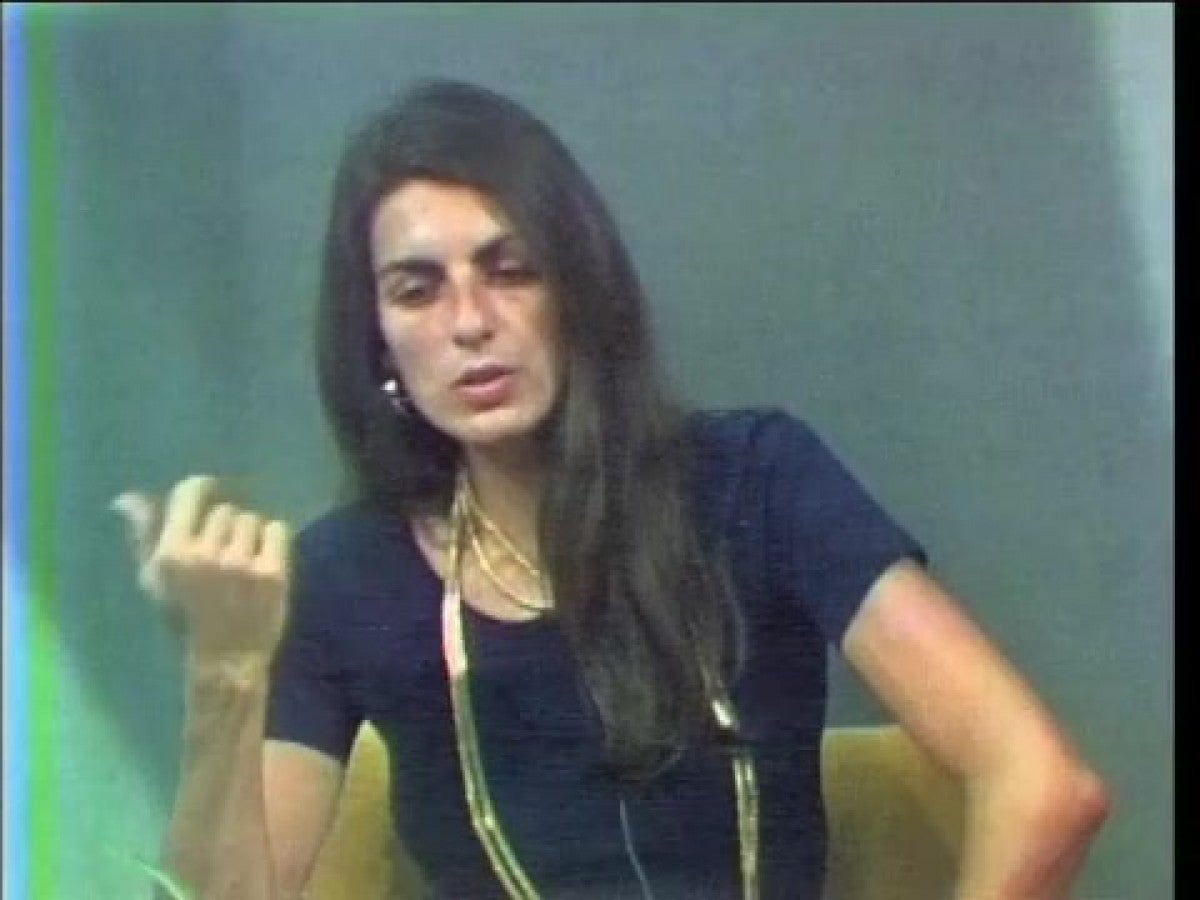Could the chilling events of a live television broadcast, where a news anchor took her own life, be more than just a tragic incident? The story of Christine Chubbuck, who delivered a final, heartbreaking message before ending her life on air in 1974, remains a stark reminder of the fragility of the human psyche and the potential pressures faced by those in the public eye.
The date was July 15, 1974. The location: Sarasota, Florida. Christine Chubbuck, a 29-year-old newsreader for a local broadcasting station, sat at her anchor desk, poised to deliver the news. In the annals of television history, this day would become infamous. At around 9:30 in the morning, during a live broadcast, Chubbuck committed suicide. The event, shocking and unprecedented, quickly made headlines, and the details of that fateful morning continue to resonate even today.
The narrative takes us back to a time when television was still a relatively young medium, and the boundaries of what was considered acceptable were constantly being tested. The incident left an indelible mark on the world, prompting introspection on mental health, the ethics of media, and the demands placed on those who deliver the news.
- Why Maddy Left Wild N Out The Real Story Uncovered
- George Amal Clooneys Kids Perks Life Latest News 2024
| Category | Details |
|---|---|
| Full Name | Christine Ann Chubbuck |
| Date of Birth | August 24, 1944 |
| Date of Death | July 15, 1974 |
| Age at Death | 29 |
| Nationality | American |
| Education | Ohio State University |
| Occupation | Television News Reporter, Anchor |
| Workplace | Channel 40, Sarasota, Florida |
| Marital Status | Single |
| Cause of Death | Suicide (self-inflicted gunshot wound) |
| Location of Death | Channel 40 Studio, Sarasota, Florida |
| Known For | The first person to commit suicide on live television |
| Legacy | Subject of numerous documentaries and films exploring themes of mental health, media ethics, and the impact of public suicide |
| Reference | Wikipedia - Christine Chubbuck |
Before the tragic climax, Chubbuck had presented three news items as she had done countless times before. The script then called for a clip to be shown, but when the film jammed, she took a different course. In a moment that would forever be etched in the memories of those who witnessed it, she looked directly into the camera, and the world watched as she delivered her final chilling words. It was a moment that transcended the usual reporting, a stark and haunting statement. She then took out a .38 revolver and shot herself in the head.
The immediate aftermath was one of stunned silence and disbelief. The broadcast, which had been designed to inform and entertain, had instead become a gruesome spectacle. The incident left the audience, the stations staff, and the entire community reeling.
The news was not just local. Headlines blazed across the country, and the story of Christine Chubbuck became an infamous chapter in television history. In those days, however, the nature of media was different, and the story did not remain at the forefront for long. The incident was shocking. Yet, despite the magnitude of the event, it faded from the headlines with surprising speed. This contrasts sharply with the media landscape of today, where such an event would be dissected and discussed in detail across various platforms. The lack of constant coverage, the absence of social media, and the slower pace of news dissemination meant that, eventually, the story of Christine Chubbuck receded from public memory.
The station's policy of presenting "blood and guts" content was a point that Chubbuck herself alluded to in a sardonic statement before the tragic act. She mentioned this, which drew attention to the potential exploitation inherent in the medium, even during her final moments. This commentary offered a glimpse into the complex emotions of a woman struggling with mental health issues and a profession where the line between information and spectacle could easily blur. In a poignant moment, her public statement of media exploitation was a final critique of the industry she was a part of.
While the details of the broadcast are well-documented, the existence and location of the footage have been subject to much debate. Many believe that all copies of the tape were destroyed, though this is not universally accepted. The very fact that a news anchor's suicide was captured live on television has given rise to ongoing discussion and speculation. The broadcast, now notoriously elusive, has become a symbol of the unexpected and potentially devastating consequences of fame, mental illness, and the demands of the media. The fact remains that it stunned audiences and made headlines worldwide.
The incident occurred on July 15th, 1974, the culmination of years of struggles with depression. After the gunshot, Chubbuck was rushed to Sarasota Memorial Hospital. She was pronounced dead fourteen hours later. Those final hours, while the station staff dealt with the fallout, brought calls pouring into the station, a testament to the sudden, shocking nature of the tragedy.
The case also reminds us of the importance of mental health awareness. The events leading up to the incident suggest that Christine Chubbuck had been wrestling with depression for a long time. It is a potent reminder that mental illness can affect anyone, regardless of their position or achievements. The story highlights the critical need for empathy, support, and awareness in order to help people dealing with mental health issues.
While the story of Christine Chubbuck is primarily known for its shocking nature, it also provides a valuable lesson about the ethics of media. Chubbucks final words, and her choice of actions, prompted reflection on the responsibilities of news organizations and the impact they can have on people. The event served as a stark illustration of the power of media and the implications of presenting tragic events to the public.
In the case of Owen Hart, his death was entirely the responsibility of WWE. The company decided to have him suspended from the rafters of an arena. They then hired a person who claimed to have experience in these stunts. Unfortunately, the equipment provided for the harness was insufficient to carry the weight of a human. During the performance, the support clip came undone, and Hart fell to his death.
Today, the incident remains a topic of discussion. The story is a reminder of the human cost of mental illness, the ethics of media, and the importance of understanding the impact that public exposure can have on an individual. The tragic events of that morning in Sarasota, Florida, on July 15, 1974, continue to serve as a powerful reminder.
- Aj Hutto Now Age Life After Trial New Details Revealed
- Unveiling John Legends Life Music A Deep Dive


